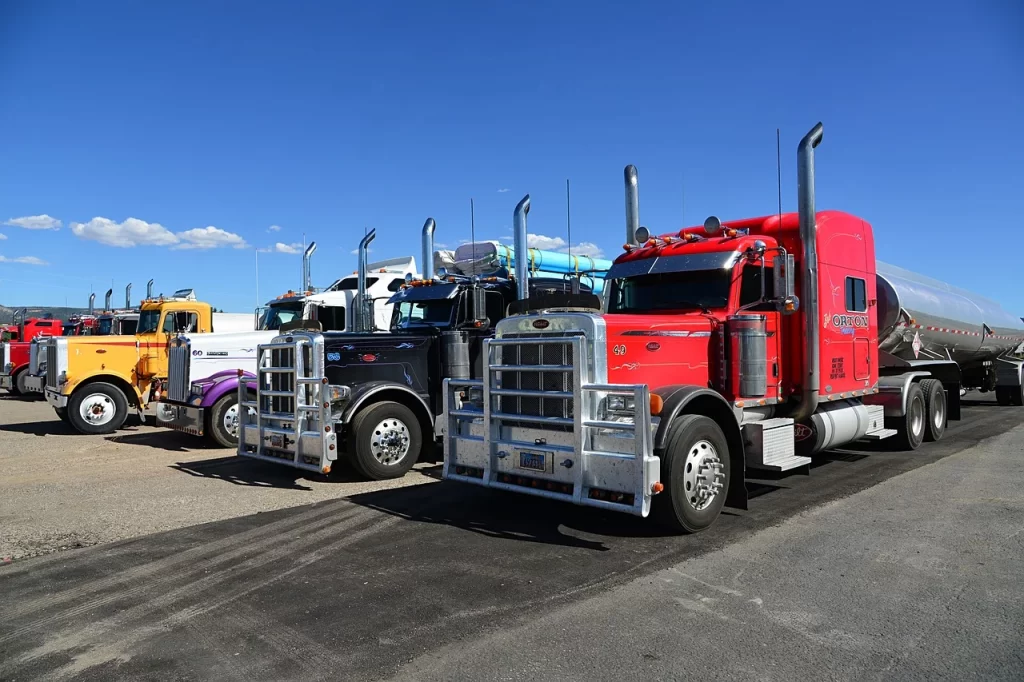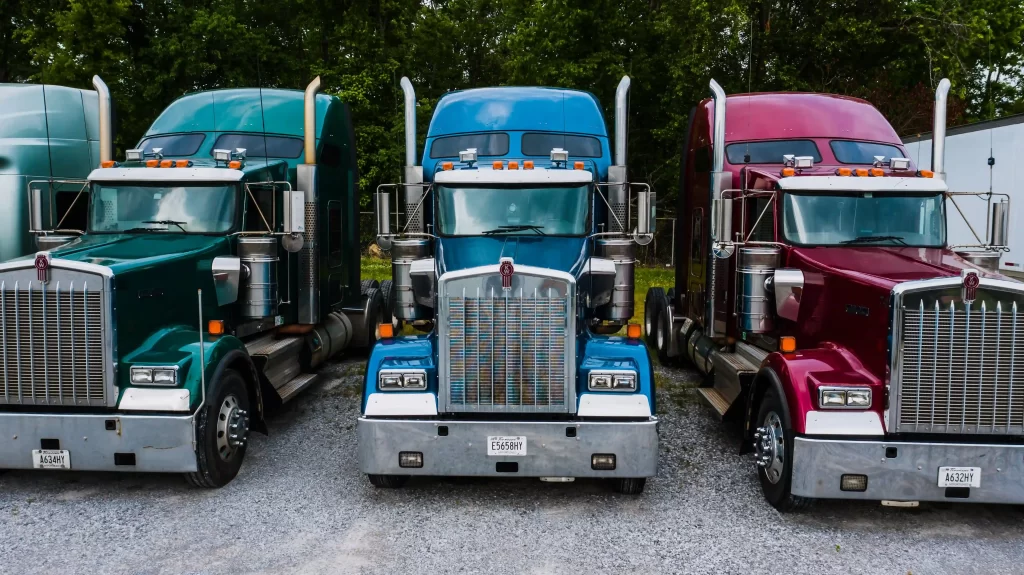
Commercial truck parking aims to ensure rest and safety for drivers and is a commonly overlooked aspect of America’s commerce. Without adequate truck parking, the supply chain would literally grind to a halt.
The problem is that there simply isn’t enough truck parking to meet demand. With an estimated one truck parking space for every ten trucks on the road, the basic premise of truck parking has been seriously neglected in recent years. As a result, many savvy entrepreneurs are launching truck parking businesses to help satisfy the demand (if only a little) and reap the benefits.
One of the most important aspects of launching a truck parking business pertains to the zoning requirements enforced by the local government. Through this article, we are going to take an overview of the main requirements.
Essential Part of Trucking
Zoning regulations are an important aspect of truck parking, helping to avoid common problems like noise and traffic congestion. The rules set specific areas for truck-based activities relating to aspects and challenges like vehicle size and safety.
The lack of sufficient truck parking has become a severe issue of late. Drivers’ welfare has been put at risk as they often face long, demanding hours without suitable parking provisions. The widespread lack of facilities has created a spurt of illegal parking in unsuitable areas, creating a safety risk to truck drivers and, in some cases, widespread residential communities.
If you are thinking of launching a truck parking business, the zoning requirements for truck parking are a subject you will need to address at some point. Through this article, we shall look at the various aspects of the regulations, including what kind of zoning for truck parking is required, aiming to serve a general picture of what is involved.
Overview of Truck Parking Regulations
Knowing what zoning is required for truck parking is an important aspect of planning for local authorities to manage land in their areas effectively. They divide land into different zones, each one designated for specific uses like residential, commercial, or industrial activities. This division ensures that differing land uses coexist without any conflicts, hopefully preventing issues like industrial facilities being set up near residential homes.
The main goal of zoning is to support orderly community development, focusing on health, safety, and overall well-being. It helps manage factors such as noise, traffic, and environmental effects, keeping incompatible land uses separate and establishing important standards.
Zoning’s role also relates to controlling urban and regional growth, determining exactly where and how development occurs while also ensuring necessary infrastructure and services meet with land uses. The regulations also help preserve property values by preventing harmful developments that would probably devalue neighboring properties.
Different Zoning Designations and Their Relevance to Truck Parking
For commercial truck parking, it helps to understand what zoning is required for semi-truck parking in areas dedicated to transportation. Zoning classifications dictate where truck and semi-truck parking is allowed. Typically, the most relevant classifications for truck parking include industrial, transportation, or mixed-use areas. These categories generally support activities like warehousing and transportation services.
Known for their focus on manufacturing, logistics, and transport, industrial areas are often the most suitable for truck parking. This suitability stems from their ample space for large vehicles, strong infrastructure, and minimal nearby residential areas that might be disrupted by truck presence.
For commercial truck parking (especially semi-trucks), zones dedicated to transportation are the most relevant. Positioned close to major highways or transit hubs, these zones support facilities like truck terminals and distribution centers, offering specific parking areas for commercial vehicles.
Mixed-use zones are another option for truck parking, particularly when considering what kind of zoning is needed. These areas blend residential, commercial, and industrial uses.
Key Zoning Rules for Truck and Semi-Truck Parking
As an entrepreneur, when thinking about what kind of zoning is required for truck parking, it’s important to focus on the specific zoning rules designed to maintain safety and functionality. These rules often cover vital aspects like the size of parking spaces, how trucks maneuver within the area, entry and exit points, lighting conditions, and even green elements, to some degree.
The general intent is to address the unique needs of commercial trucks while also considering their impact on the nearby areas.
For commercial truck parking, including semi-truck parking, one critical rule is defining the minimum size for each parking spot. This ensures trucks have adequate space to maneuver, helping to avoid traffic blockages or encroachment on adjacent properties.
By the same token, designated areas for truck movement are essential, as these spaces allow trucks to move in and out of parking spots with ease, avoiding disruptions or potential property damage.
Entry and exit locations in truck parking zones are strategically placed to reduce conflicts with local roadways or junctions. This careful placement eases the movement of trucks into and out of parking areas, contributing to smoother overall traffic flow.
Lighting is also a consideration in truck parking zoning – proper illumination is necessary for the safety and security of both drivers and their vehicles, particularly during nighttime.
In addition, incorporating greenery like trees and shrubs can not only improve the visual appeal of truck parking areas but can also act as natural barriers when needed.
Key Factors for Truck Parking Zoning Requirements
Understanding what zoning is required for truck parking involves considering several relevant factors, although different localities will have their own specific needs based on available land and transportation infrastructures.
Here are some common considerations: (check with your local authorities for specific details)
- High Truck Traffic: In areas with frequent truck traffic, there’s often a need for larger and more accessible truck parking facilities. This ensures trucks can park and maneuver efficiently without causing congestion.
- Land Availability: The ownership of land with the right zoning is important for establishing truck parking areas. When land is scarce, more innovative or alternative solutions might be necessary to meet parking needs.
- Proximity to Major Routes: Truck parking zones should be placed near major highways or arterial roads, ideally. This proximity increases accessibility and reduces unnecessary detours for truck drivers.
- Attracting Stakeholders: Working closely with trucking companies, logistics firms, and other relevant parties can provide insights into the industry’s needs. This collaboration can help shape effective and practical zoning requirements for truck and semi-truck parking.

Local authorities should weigh these factors when defining zoning regulations for truck parking. The goal is to create rules that are realistic, meet truck parking demands, and conform with the community’s broader land use objectives.
Common Issues With Establishing Zoning for Truck Parking
The main challenge in setting up zoning for truck and semi-truck parking is finding large and suitable land areas, especially in densely populated urban regions. Local governments might need to look at alternative solutions like transforming underused or empty spaces, considering shared parking options, or integrating truck parking into larger, mixed-use projects.
Another hurdle is the strategic placement of these parking areas, as truck drivers require easily reachable parking spots that don’t deviate greatly from their planned routes. Locating these facilities close to major transport pathways or distribution centers is a prerequisite for reducing drivers’ travel time and increasing operational productivity.
Enforcing parking regulations is also a key aspect. Regular monitoring and consistent enforcement are important to make sure that truck parking follows set regulations. Authorities should implement measures like clear signage, reporting processes, and a system of fines or penalties to maintain order and prevent non-compliant parking practices.
Addressing Truck Parking Demand
Addressing the need for truck and semi-truck parking, local authorities can adopt various tactics, including:
- Partnerships with the Private Sector: Working with private businesses like truck stops and logistics companies can create additional parking spaces.
- Enhancing Existing Facilities: Upgrading current truck parking areas can boost their capacity and reduce overcrowding.
- Technology Utilization: Implementing systems to provide real-time information on parking space availability, possibly through truck parking apps, can guide drivers to open spots swiftly.
- Encouraging Private Development: Offering benefits such as tax breaks or fast-tracked permits to developers who include truck parking in their projects can contribute to a greater availability of parking spaces.
- Innovative Parking Solutions: Exploring creative options like off-site parking with shuttle services or time-managed parking spaces can maximize land use and accommodate high-demand periods.
Case Studies
Let’s examine two examples that better illustrate successful truck parking zoning regulations, highlighting the methods used and the insights gained.
- City of Denver, Colorado
Denver has introduced progressive zoning regulations to meet truck parking requirements while also ensuring a balance with other land uses. A huge step in achieving this is the truck parking design guidelines within industrial zones, setting specific standards for these facilities.
These guidelines focus on integrating truck parking with the urban environment, including architectural design, buffering strategies, and accommodation for greenery. They also place a high priority on pedestrian safety and access, making sure that truck parking areas do not obstruct pedestrian paths.
Outcomes Learned:
- Integrating truck parking within urban areas can improve aesthetics and improve community appeal.
- Prioritizing pedestrian safety encourages walkability and inclusivity in industrial areas.
- Establishing clear design standards ensures consistent, high-quality truck parking facilities.
- State of Georgia
Georgia has adopted a comprehensive strategy to tackle truck parking demand, including forming partnerships with private companies and using technology. The Georgia Department of Transportation worked with private truck stop operators to increase parking availability statewide.
They also launched a digital system offering live data on available truck parking spots, allowing drivers to more efficiently plan their routes, reducing time spent looking for parking, and easing congestion at busy stops.
Outcomes Learned:
- Collaboration with the private sector is useful in improving truck parking capacity.
- Digital systems providing live parking data can streamline truck parking and improve route planning for drivers.
- Cooperation between government bodies and private companies is needed for an effective and unified approach to truck parking needs.
These case studies, while brief, demonstrate the need for forward-thinking tactics, collaborative efforts, and an understanding of local requirements in implementing truck parking zoning regulations. A wide-ranging approach relating to the transportation sector, land use, technology, and partnerships is needed to optimize parking solutions.
In Summary
Good zoning for truck and semi-truck parking is essential for providing suitable and secure spaces for commercial vehicles. Through appropriate zoning categories and detailed regulations, local authorities can easily meet the specific demands and challenges of truck parking.
Truck parking rules are also essential for ensuring driver safety, reducing traffic congestion, maintaining the look and feel of communities, and even improving the supply chain. Proper facilities not only offer badly needed rest areas for drivers but also decrease the risk of fatigue-related incidents – thereby improving overall road safety.
Regulation of truck parking also helps in reducing illegal parking, traffic infractions, and safety hazards due to incorrect parking.
Challenges in implementing truck parking zoning include finding suitable land, ensuring easy access, and effective enforcement. Balancing the trucking industry’s needs with other land uses – such as residential areas and community aesthetics – is critical.

Wrap Up
In short, effective zoning regulations for truck parking should never be overlooked for the sake of providing sufficient spaces for commercial trucks – spaces that are needed now more than ever, currently.
Good zoning contributes to the safety and smooth running of the transportation industry. By recognizing the unique requirements of trucking, balancing various land uses, and employing creative strategies, local authorities can improve truck parking solutions.
In turn, both the drivers and the communities they serve will benefit greatly.
The information published herein is for general informational purposes only. Truck Parking Club does not make any representations or warranties about the completeness, reliability, legality, and accuracy of this information. Any reliance placed on such material is strictly at the user’s own risk. Truck Parking Club shall not be responsible for any losses or damages incurred in connection with the information published herein.





